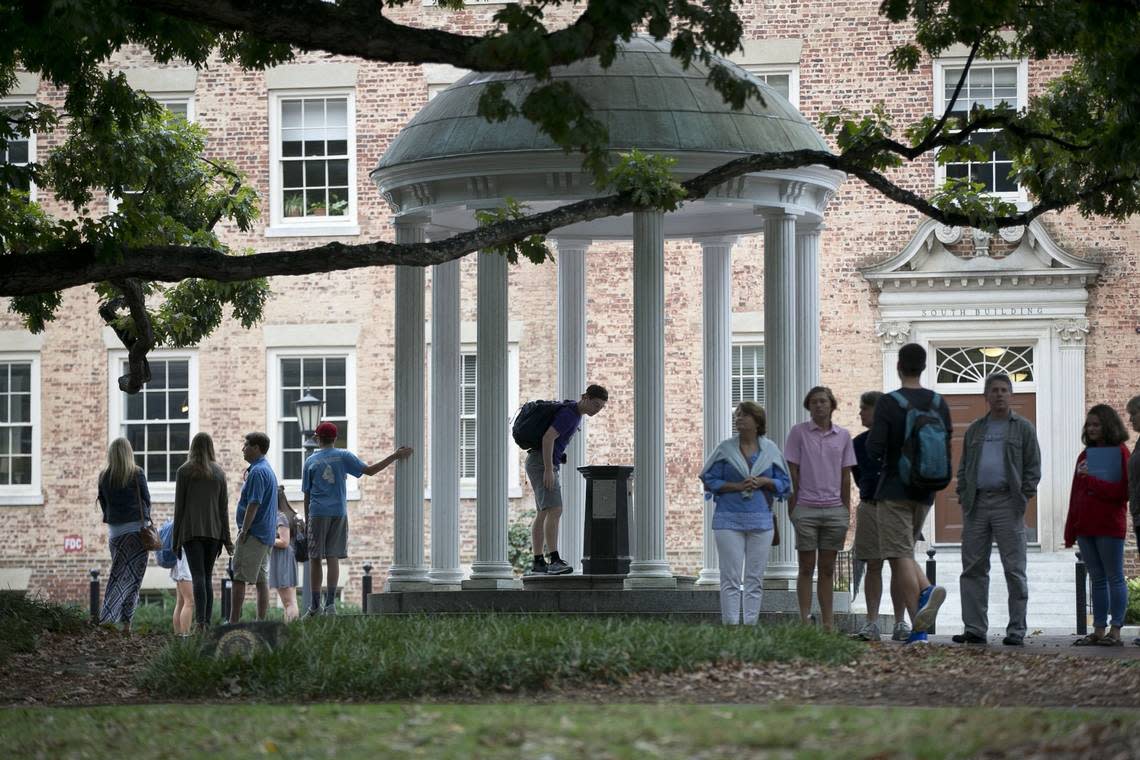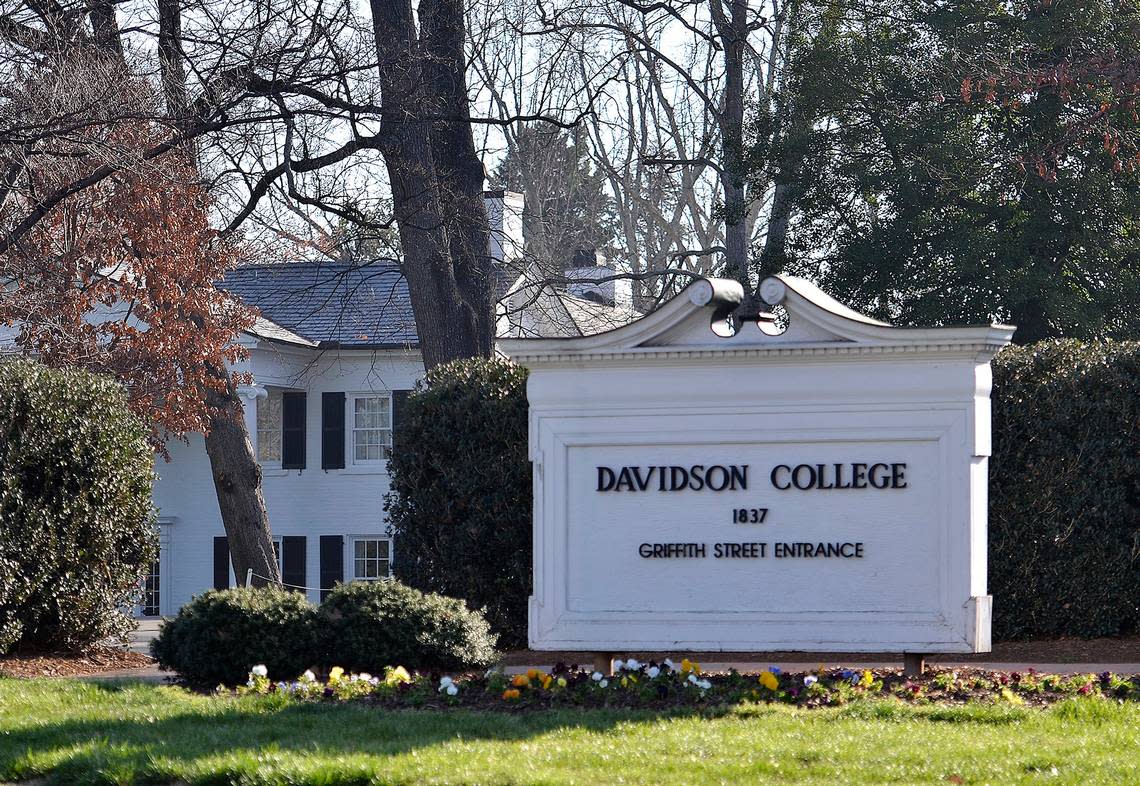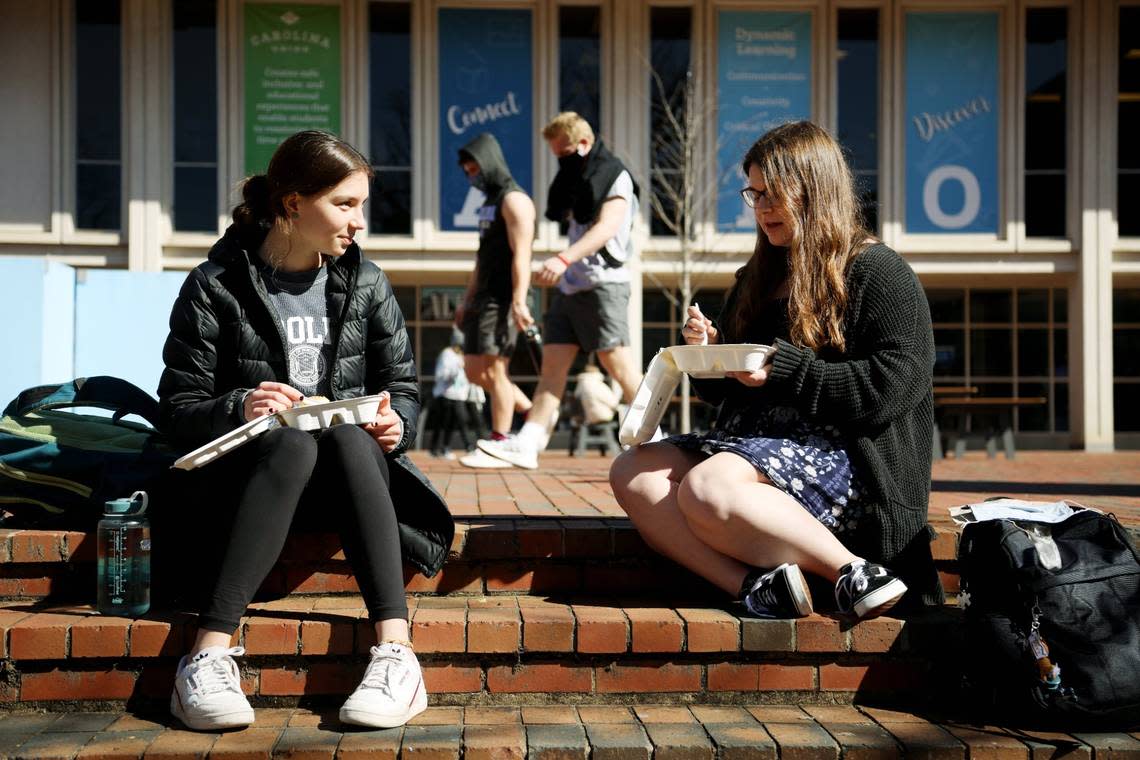How will college entry change after Supreme Court ruled UNC’s policy unconstitutional?
Universities across the country and in North Carolina will likely revisit their admissions applications this summer to ensure compliance with the Supreme Court’s ruling that considering race in the process is unconstitutional.
University leaders generally say they need time to review the ruling, which directly involved UNC-Chapel Hill, and determine any necessary policy changes. But there’s a theory about who might be most affected.
“This is a decision that primarily affects selective colleges,” Daniel Klasik, an associate professor at the UNC School of Education who researches college admissions and race-conscious policies, told The News & Observer Friday. Those schools, such as UNC, were the most likely to consider race as a factor in admissions prior to the the court’s decision, Klasik said.
UNC Chancellor Kevin Guskiewicz, who leads the most selective public university in North Carolina, said Thursday that the university will communicate more about its plans “in the coming weeks.” UNC Charlotte, which is part of the same system and has a higher acceptance rate, released a statement that said that university does not consider race as a factor in undergraduate admissions decisions or a determining factor in graduate programs.
Whether it’s Chapel Hill, Charlotte or any other school in the system, UNC System President Peter Hans said in a statement, “We are closely reviewing today’s decision and will follow the law.”
How will they follow the law? The court’s ruling along with evidence from states where race-based affirmative action had previously been banned in admissions provide some immediate clues — both in the short term, as applications may be revised this summer, and over the long term, as student bodies will likely become less diverse.
Indicating race on an application

The most immediate change to admissions processes could be seen in how, or if, prospective university students are asked to identify their race on admissions applications moving forward.
Though the ruling did not explicitly call for the end of students being asked to self-disclose their race on an application — either by checking a box or indicating it in other ways — “it seems clear that race cannot be used as a blanket category,” Klasik said.
Ted Shaw, a professor at the UNC School of Law who specializes in civil rights and affirmative action, told The N&O on Thursday he thought the ruling would cause colleges to reexamine how their applications ask about an applicant’s race.
“I think that, given what the court has said, I’d be surprised if colleges and universities did not revisit those kinds of mechanical processes, which reflect awareness of race,” Shaw said.
Students for Fair Admissions, the anti-affirmative action group that brought the case against UNC to the Supreme Court, said in a statement the court’s decision compelled “the removal of all racial and ethnic classification boxes from undergraduate and postgraduate application forms,” adding that the group would “remain vigilant and intend to initiate litigation” if universities did not follow the ruling.
Klasik said universities may still include such questions and boxes on their applications to collect data about students who apply or subsequently enroll, though he is “almost certain” that data will be hidden from admissions officers.
The Common Application, a membership-based platform used by more than 1,000 colleges nationwide, said in a statement Thursday member schools will soon be able to hide from admissions officers any race or ethnicity information students choose to disclose.
Adrienne Amador Oddi, vice president of strategic enrollment and communications at Queens University of Charlotte, told The Charlotte Observer her chest tightened while reading the decision. It was a feeling all too familiar, Oddi said.
“It is also important to know that eliminating a check mark does not eliminate race as an element of identity,” Oddi said, while noting race is not an explicit factor in admissions at Queens. “As one of North Carolina’s top schools at improving the social mobility of our students, this Supreme Court ruling makes our work at Queens even more important.”
Discussing experiences tied to race
Even as the court appeared to end the use of race as a factor or category for admissions officers to consider, Chief Justice John Roberts’ majority opinion could leave open a door for students to discuss their race in application essays and have colleges consider it in some way, as long as it is tied to personal experiences or their character qualities.
How exactly colleges may follow that distinction remains to be seen.
“The Chief Justice is saying that applicants can write about their life experiences, but that doesn’t tell you what the admissions officers are able to do with that and how they consider an applicant who wrote about those experiences,” Shaw said.
During oral arguments in October, and again in her dissenting opinion, Justice Ketanji Brown Jackson noted considering a student’s experiences without regard to race could create unequal opportunities for students of color. For example, a white student, Jackson suggested, might be able to discuss their family’s history of attending UNC for generations — an experience that is not equally available to students of color, given the university’s history of segregation.
Klasik noted that the narrow, and somewhat unclear, confines in which students might be able to pen “a successful portrayal” of their experiences as tied to race could create additional barriers in the admissions process. Some students, he said, may be able to be coached or tutored through that process, but that will most likely not be the case for all students.
“You can imagine that students from lesser-privileged backgrounds might not know how to code those responses in their essays,” Klasik said.

Davidson College President Doug Hicks addressed the Supreme Court’s decision Thursday afternoon by describing the college’s holistic review of applicants.
Hicks said when a prospective student applies to Davidson officials look at their experiences — the influences in their lives that have shaped their perspective and understanding.
“We know that students and their families live in a society in which discrimination, including that based on racism, is still a harsh reality–and we fervently believe that education creates the context for overcoming inequalities and injustice,” said Hicks, whose university is made up of 30% students of color.
“Davidson’s Admission and Financial Aid Office has for many, many years led a comprehensive process that reviews every student as an individual who will be part of a class that lives and learns together. Our deep and meaningful process — however we will necessarily adapt it — gives us hope that we can continue to recruit a class that reflects our nation and its promise.”
Race-neutral alternatives
Aside from deciding how, or if, to use racial indicators on students’ applications, colleges may consider alternative factors to race — often called “race-neutral alternatives” — to continue to yield some level of diversity on their campuses.
Socioeconomic status and where a student lives are generally the two most common race-neutral alternatives cited by opponents of race-conscious admissions.
In considering applicants’ socioeconomic status, “the idea would be that, rather than giving a boost to race, you would give it to students from lower socioeconomic backgrounds,” Klasik said, noting that “traditionally underrepresented racial minority students tend to come from lower socioeconomic backgrounds.”
But the correlation isn’t strong enough to achieve the same levels of racial diversity, Klasik said.
The president of Johnson C. Smith University in Charlotte, which was founded in 1867 for the education of men who were recently freed from enslavement, said he’s concerned the court’s decision may limit access to higher education for Black and brown students, particularly access to elite private and flagship state-supported universities.
“By limiting race in admissions decisions, the Supreme Court has begun to reconstruct the roadblocks that blocked the paths of African Americans in this country for the over 400 years we have been here,” said outgoing President Clarence D. Armbrister.
Top 10 percent law
In considering or emphasizing where students live, colleges often develop plans to give equal opportunity by granting assured admission to top students at every high school in a state.
In Texas, for example, a “Top 10 Percent Law” guarantees admission to the state’s public universities for in-state students who graduate in the top 10% of their high school academically. At the University of Texas at Austin, which was involved in its own Supreme Court case over race-based affirmative action a few years ago, the university said the top 10% plan has “had a positive impact on increasing geographic diversity and providing more accessibility to UT Austin to students from all schools around the state.”
Colleges could also pursue more strategic and comprehensive approaches to diversity on their campuses, including by offering targeted outreach to underrepresented minority groups, bolstering community college transfer programs, increasing financial aid or eliminating legacy admissions preferences for children of alumni.
About two weeks prior to the ruling, Duke University announced it would begin offering free tuition this fall to students of families from North Carolina and South Carolina who make $150,000 or less, though the university has not explicitly tied that announcement to a then-potential decision by the Supreme Court.
Even with alternative factors or comprehensive strategies, selective colleges may experience declines in the racial diversity of their students.

Both the University of California system and the University of Michigan submitted briefs to the Supreme Court in support of UNC, saying the universities had experienced decreases in racial diversity after race-conscious affirmative action was banned in their respective states, despite race-neutral alternatives they implemented.
Prior to the Supreme Court ruling, a federal judge ruled there was “no non-racial approach that would promote such benefits about as well as” UNC’s race-conscious approach.
“Really what this all boils down to is, if we care about racial diversity on college campuses, it’s most helpful to be able to select on race,” Klasik said. “Any other thing we use is just a poor substitute that adds noise to the process and reduces our ability to kind of target students from specific backgrounds.”
